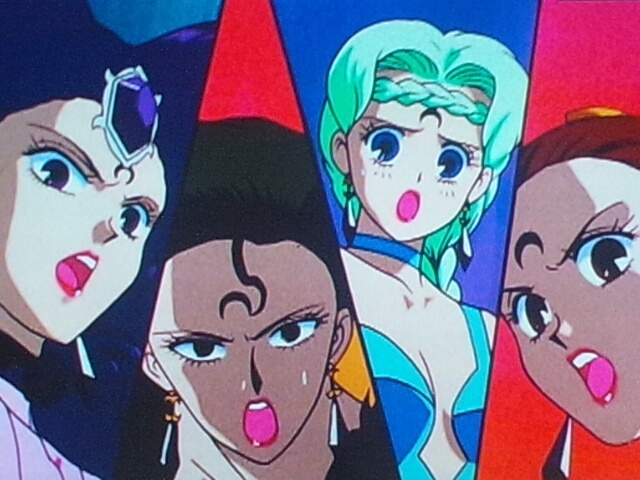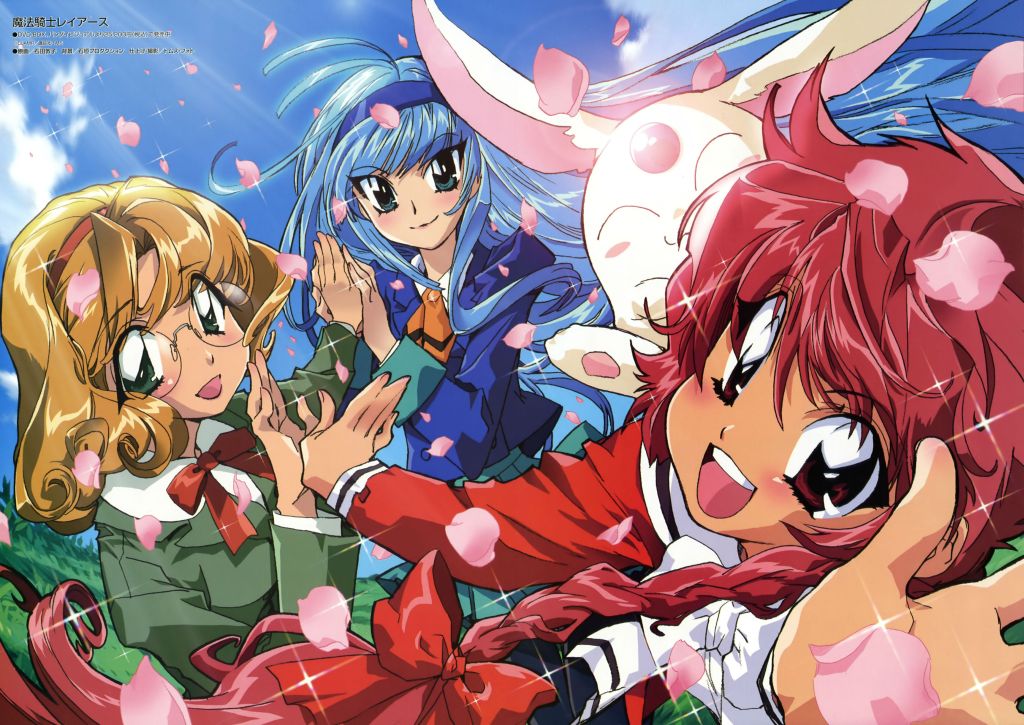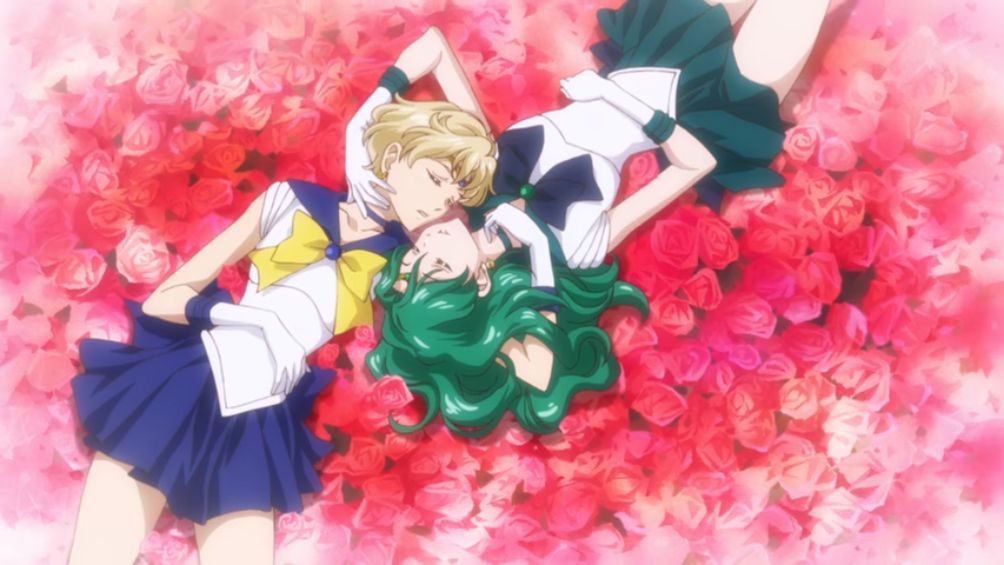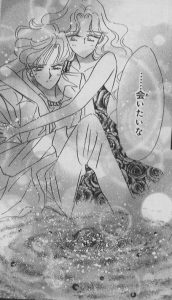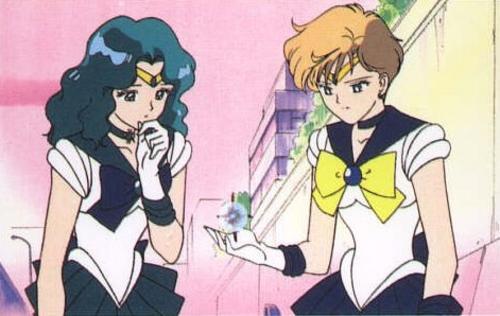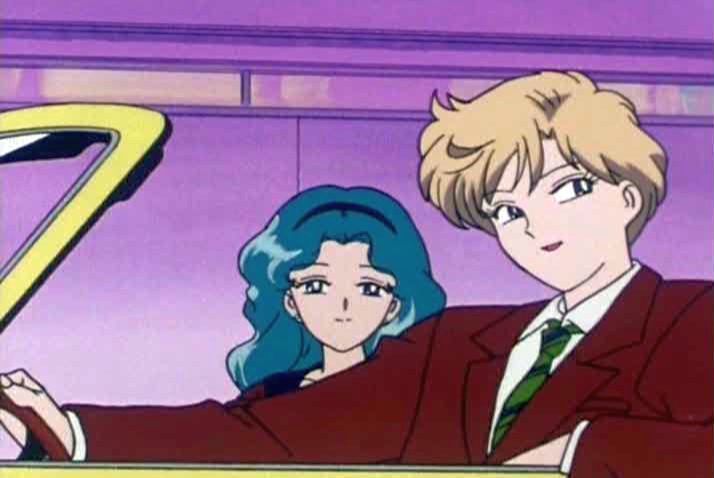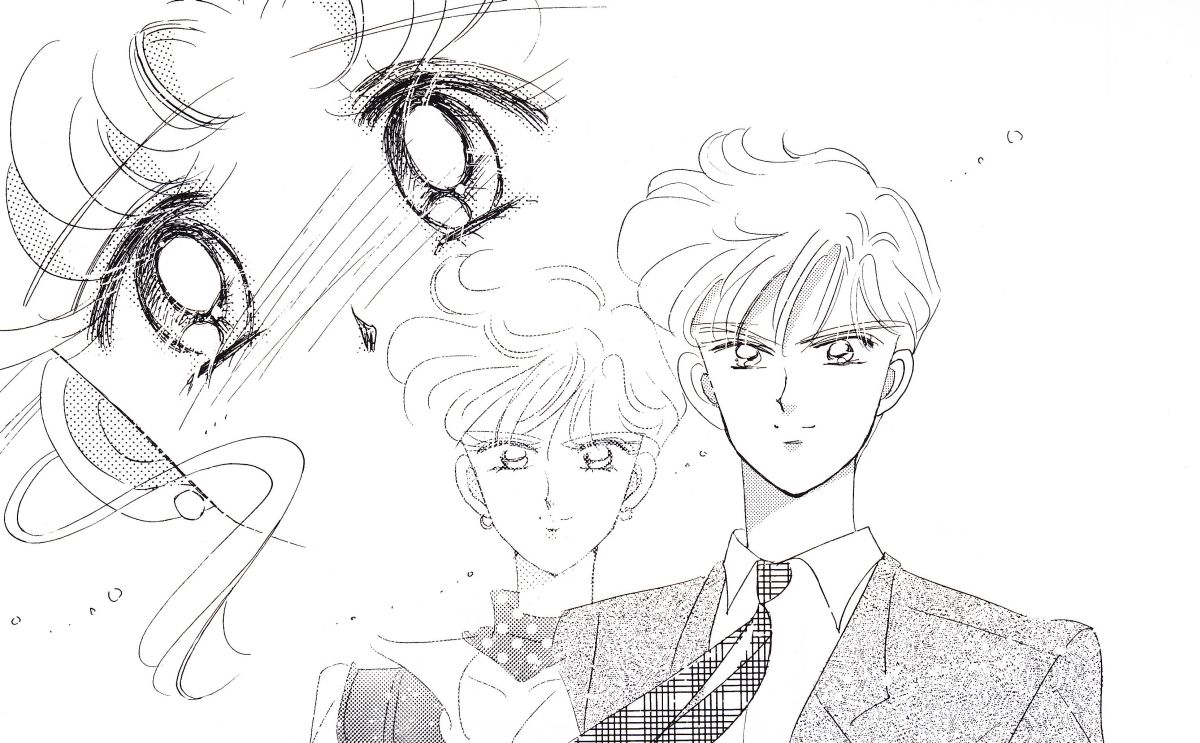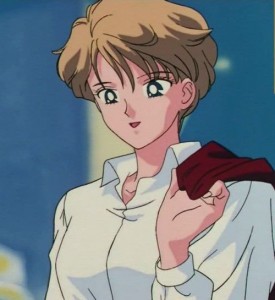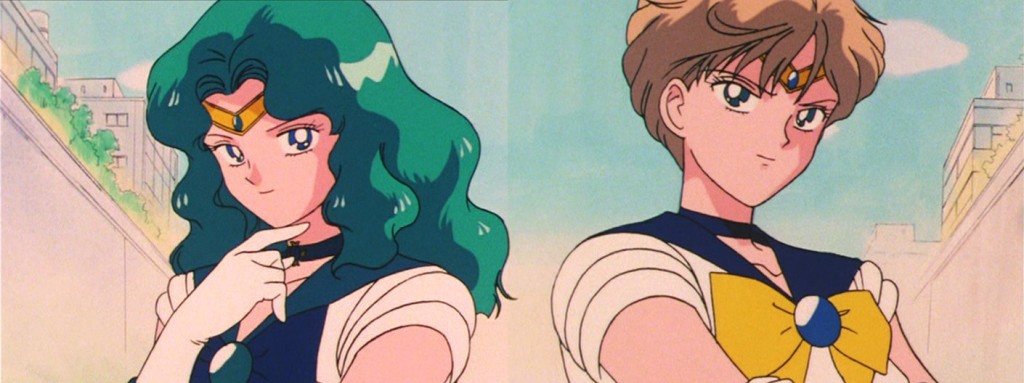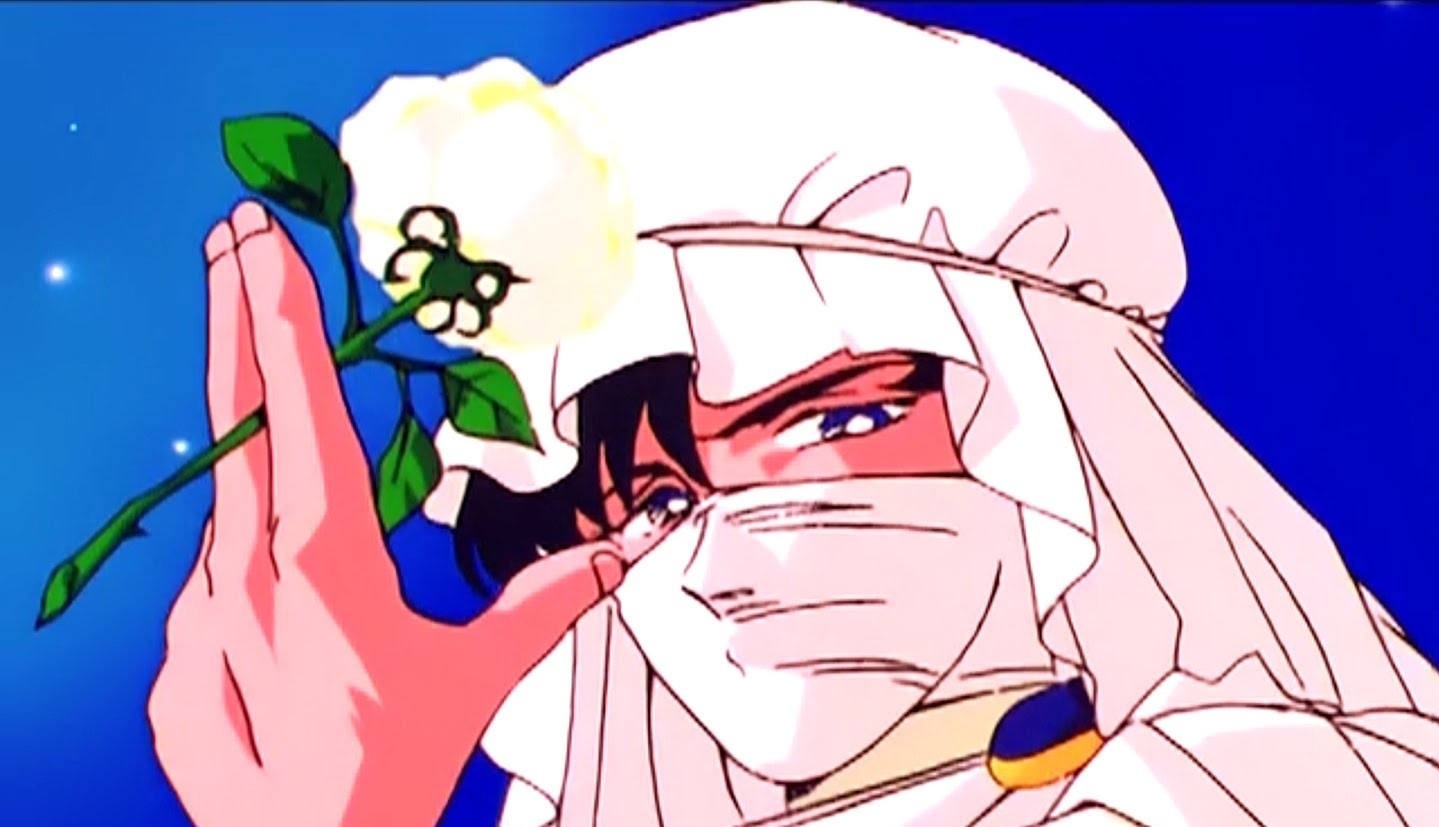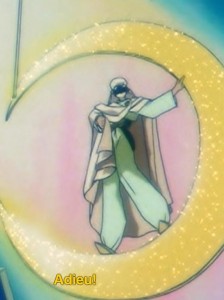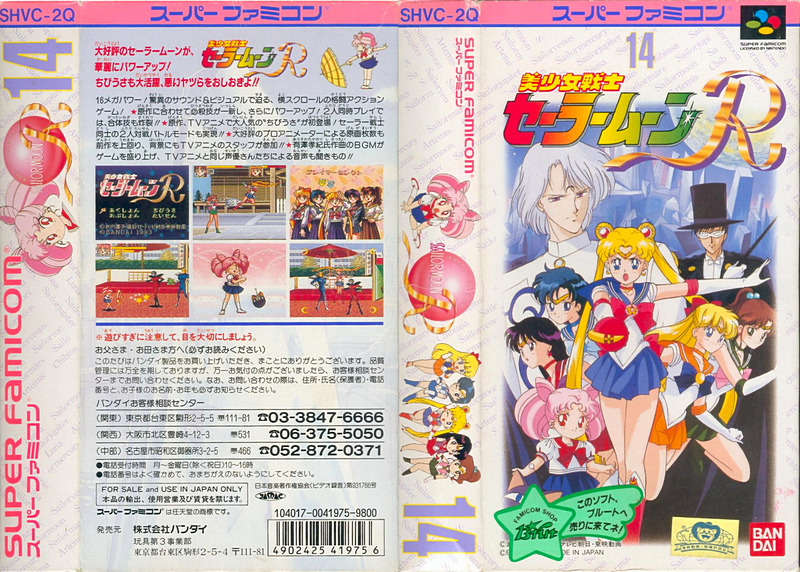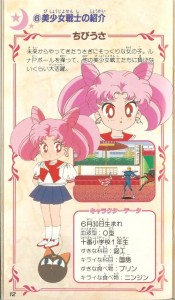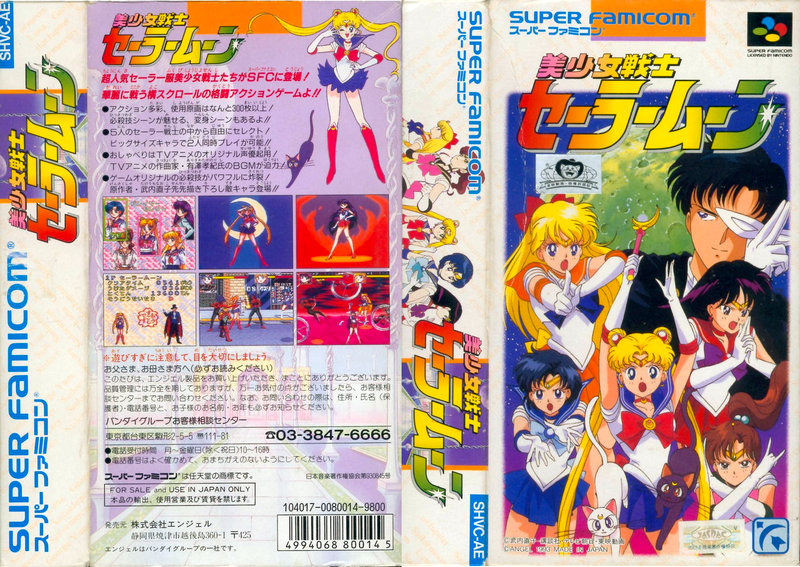While there’s no official (or even in-universe) connection between the Dark Kingdom and the Black Moon, Ms. Takeuchi continued reaching back into her roots in mineralogy and family history in gemstones when naming the members of the Black Moon Clan. But things aren’t exactly so clear cut with the Ayakashi Sisters. So what, exactly, is the mythological background behind Rubeus’ four underlings?
Tag Archives: Translation
[Off Topic] How Deep Is the Car Connection in Magic Knight Rayearth?
In a word? The connection between automobiles and the characters, locations, and even magic spells in CLAMP’s Magic Knight Rayearth (MKR) series is “thorough.” In a phrase? There’s basically nothing in MKR which is doesn’t in some way connect back to car brands or the companies which manufacture them, either Japanese or foreign. Though the purpose of this blog is to investigate the mysteries of the characters and world of Sailor Moon, this is a topic that’s interested me for awhile and I figured it’d be worth taking a quick dive down this rabbit hole. If you’re interested, please do read on!
Were Haruka and Michiru Viewed as Lesbians in 1990s Japan?
As Sailor Moon‘s popularity began to pick up in the west, and the decision ultimately came down to not continue dubbing the series (despite efforts from the fans), the fans started to reach out on the early internet for more information about the undubbed seasons and about the other, mysterious Sailor Soldiers. Fans went back and forth on the nature of the relationship between the little-known Sailor Uranus and Sailor Neptune – both women! – with people going so far as to make up lies about fake origins, gender transformations, and more.1
Though the dust has ultimately settled and, with the more direct statements in the Sailor Moon Crystal, both fans and creators can agree that they are clearly a lesbian couple now,2 this still leaves it unclear as to how their relationship was viewed in Japan. After all, if there was so much confusion in the US, wouldn’t it be natural for there to be confusion in Japan as well?
While it’s difficult to say what a country believed as a whole, I’m basing much of my statements on an article published by Newtype,3 one of the top three anime magazines in Japan. This article was published shortly after episode 126 of the anime aired,4 presumed to be the end of Haruka and Michiru’s story line. The title of the article is:
“Farewell to the Soldiers of Love – The Dramatic Tale of the Soldiers of Forlorn Love, Haruka & Michiru, Comes to an End”
The article is a bit long to provide the English and Japanese in their entirety, but the following is a translation of the relevant parts where the author describes his/her interpretation of episode 110.5
“Neptune, took the bullet from Eudial in order to save Uranus’ life. Uranus took her own life with the gun that was used to shoot Neptune. Didn’t you [the staff charged with creating episode 110] find this to be just a little sexy, in addition to its seriousness?”
“I would like you to read the following as just one interpretation of dramatic expression, as that is all it is. Thinking of this in a Freudian manner, a gun is symbolic of male genitalia. Though they appear to be lovers, neither of them has male genitals. Is there some meaning to the fact that the more feminine Neptune took the shot of her own will while the masculine Uranus shot herself of her own will (that’s right, the one who shot and the one to be shot couldn’t be reversed!)? Then, a symbolic so-called gun comes between the two of them (who do not have any male genitalia) and “talismans” are born from their bodies after they have been shot through. Almost as if a child had been born from within them…”
“The relationship between the two of them is reminiscent of the love between a man and a woman, but it was a deeper connection between spirits that was somehow even stronger than that. I think this scene was drawn out amazingly, with a hidden subtext of sexual symbolism of the depth of their relationship.”
The author manages to say both a lot and nothing at the same time, which makes it a bit difficult to interpret. Ultimately, though, I think the takeaway that you can get from this article is that if one of the biggest Japanese anime magazines was talking so frankly about the relationship, it’s fair to say that the general consensus among anime fans at the time was that there was some sort of sexual relationship between the two (even if some people chose to read into it in a Freudian manner).
Considering how important the rise to prominence of homosexual and transgendered characters was to fans in the west,6 I’m glad to see that it was seen similarly in Japan and hope that it had similar impacts. Though the anime certainly did downplay Haruka’s mixing of genders, the message seems to have gotten across fairly well, as showcased in a tagline underneath a screenshot on the same page:
“Michiru casually responds ‘Well then…’ to Haruka’s risque line of ‘I’m not letting you go home tonight.’ This was a meaningful scene that only the two of them could have.”
As for the sexuality of the other Sailor Soldiers? Well, fan theories are abound and the jury is still out, but it’s at least nice to get a glimpse into what Japanese fans thought of Haruka and Michiru’s relationship back in 1995! This does bring one question to mind, though: did the anime really do less to advance the obviousness relationship, or possibly more? As I re-watch the series, they definitely didn’t shy from anything! What do you think?
Did the Sailor Moon Anime Make Haruka More Masculine?
I generally try to avoid topics that require an understanding of Japanese to begin with, since it’s much less fun for those involved and has a very “inside baseball”1 feel to it if you’re trying to follow along with a bunch of different terminology. Of course, it can be very interesting sometimes and since we’re talking about a series which has undergone many incarnations in being brought to the Western world, it definitely is worth discussing sometimes. The case of Haruka, and how her gender and sexuality is conveyed in the anime and manga, is certainly one of those issues worth a closer look.
Japanese, as I’m sure many of you are aware, has a lot of personal pronouns.2 In fact, if you take a look on the Japanese Wikipedia page,3 you’ll find that they list fifty-one different ways to say “I” or “me.” This leads to an interesting problem in translation, since in Japanese these all express information on the way that the speaker views both themselves and their relationship with the listener while there’s no other choice than to translate them all as “I” when putting it into English.4 While most anime fans have undoubtedly heard of the common terms like watashi, atashi, boku, and ore, there are many others like honshoku (本職; used in business correspondence, often by government officials) and wagahai (我が輩; used by kingly sorts and despots, like King Koopa from Super Mario and well known in the title of “I Am a Cat” by Natsume Soseki5) which, though slightly less common, are just as important to Japanese culture and communication.
So when it comes to Haruka, it’s obviously a great point of interest how she refers to herself, since it expresses a part of her character that doesn’t really come across in English. While researching this, though, I came across an interesting issue: the anime and the manga treat Haruka’s use of personal pronouns differently… and in a pretty peculiar way.
How does the anime treat it? Well, irrespective of whether she is Sailor Uranus or Haruka (and both before and after Usagi discovers Haruka is female), she refers to herself using the pronoun boku, which is typically reserved for males but is not seen as completely verboten when used by younger girls and up through university. Where things get interesting, though, is in the manga. Ms. Takeuchi did not stick to just one personal pronoun for the character, but actually uses two – atashi and ore, which are seen as explicitly feminine and masculine, respectively. So when appearing as Haruka, she identifies herself more as a masculine and strong personality while taking on more of a feminine touch (on the same level as the way Ami refers to herself!) when in the form of Sailor Uranus.
To be honest, I’m rather disappointed that the anime did away with this for a simple across-the-board use of boku rather than going through the effort of trying to show Haruka as more of a fluid character, transcending above the simple male/female gender choice, as Ms. Takeuchi hinted at in the manga by switching between two extremes.
Ultimately, this is all a relatively minor issue, but it’s unfortunately one that’s lost in translation since there really aren’t any direct ways to address it in English other than changing the rest of the character’s speech patterns. I’d love to hear about how other translations dealt with it, though. Especially ones which do have gendered pronouns!
Did Moonlight Knight Make a Mistake in French?
Moonlight Knight is a bit of an oddball character in the Sailor Moon anime, as he’s one of the few “hero” characters that exist only in the anime with no manga connections at all. The whole Cardian Arc1 was completely made up for the anime only, supposedly to give Ms. Takeuchi a chance to prepare her next story arc while the anime rushed ahead of her, though I’ve always suspected that the true purpose of this was to give them a sort of teaser for the upcoming Sailor Moon R movie. That, however, is a story for another time. What we’re here to look at is: what’s with Moonlight Knight’s use of French?
Possibly even more than Tuxedo Mask himself, Moonlight Knight was fond of long, dramatic speeches.2 More interesting to me, though, is what he said when he departed. Despite his strong Arabian design, Moonlight Knight always leaves the Sailor Team with a fancy “adieu.” What’s noteworthy about this is that it appears to have been a mistake by the anime production staff, directly translating his さようなら (sayounara; good bye) into something more fancy-sounding without looking into the cultural context. The issue here is that adieu implies that you don’t believe that you will see the other party again (at least not soon), and that you are saying good bye with a sense of finality. What he should have said was au revoir, which is used when you do believe that you will be crossing paths in the near future.3
While I would like to say that there was some sort of deeper meaning to this word choice and over-analyze the issue, I’m afraid that this is pretty much clearly a case of not having done the appropriate cultural research. If I were to read into the issue, however, I would say that you could make the assertion that this was Moonlight Knight’s way of expressing that he hoped he and Mamoru would soon re-join (i.e., Mamoru’s physical / human form and his sense of duty to protect the Sailor Soldiers) and was bidding them farewell. Put another way, by implying he would see them again would suggest that Moonlight Knight did not intend to return to Mamoru and resume his activities in the form of Tuxedo Mask.
Of course, this is probably looking way too into it, but it’s at least an interesting tidbit, if nothing else! Since Mamoru is a university student in the anime, and many university students are required to learn a second foreign language (other than English), it’s entirely plausible that he did study some French. You’re pretty clever, Mamoru!
Behind the Scenes with the Sailor Moon R Game Designer
[Note: This translation is edited a bit for clarity and comes from an interview in the back of a strategy guide written for the Super Famicom fighting game. You can find the Japanese interview here: Page 94, Page 95, Page 96, Page 97.]1
Opening Up on the Unspoken Stories
Jouji Yuno, Developer/Producer at Angel
Continuing with his work on “Sailor Moon” for the SFC.
— That “ChibiUsa” mode is pretty unique!
That’s right, it grew far beyond our expectations, though there’s a reason behind how it came to this. When we started game development, there were still quite a few mysteries behind ChibiUsa, so when we were putting our heads together and debating how we should put her into the game, we decided to take her out of the main game and make a separate “ChibiUsa Mode.”
In this mode, you play as the near-invincible ChibiUsa. This was partially related to her height (laugh), but since we that though that it really wouldn’t look so nice to have ChibiUsa get punched by the enemies, so we made it so that even a little kid could make it to the end. We decided to have her use the umbrella she’s had since her appearance as a weapon, but she’s stopped using it entirely lately (laugh). In the game, the umbrella is really important to her since it makes up for the difference in the enemy’s height. What’s more, it’s a lot cuter than ChibiUsa directly punching and kicking the enemies. However, from the point of view of child-rearing, it’s not ideal to be hitting enemies directly with an umbrella, so she attacks the enemies with the energy from the stars that come shoot from the umbrella.
As much as we worried about how to fit ChibiUsa into the game, it paid off and people fell in love with it.
— What about the other Sailor Soldiers?
Interview with a Sailor Moon Game Designer
[Note: This translation is edited a bit for clarity and comes from an interview in the back of a strategy guide written for the Super Famicom fighting game. You can find the Japanese interview here: Page 94, Page 95, Page 96, Page 97.]1
Behind the Scenes of Super Famicom Development
Jouji Yuno, Developer/Producer at Angel
Representative works: “Oda Nobunaga” for the SFC and “Sailor Moon” for the GB.
— First off, please tell us about how you came to develop a Sailor Moon game for the Super Famicom.
Well, we just released the Game Boy game in December the year before, and it pretty much sold out throughout Japan. However, there are a lot of restrictions due to the Game Boy’s hardware, so we felt that we would like to release a Sailor Moon game for the Super Famicom as well, since it has less restrictions than the Game Boy. The Game Boy game being such a hit is what brought this about.
